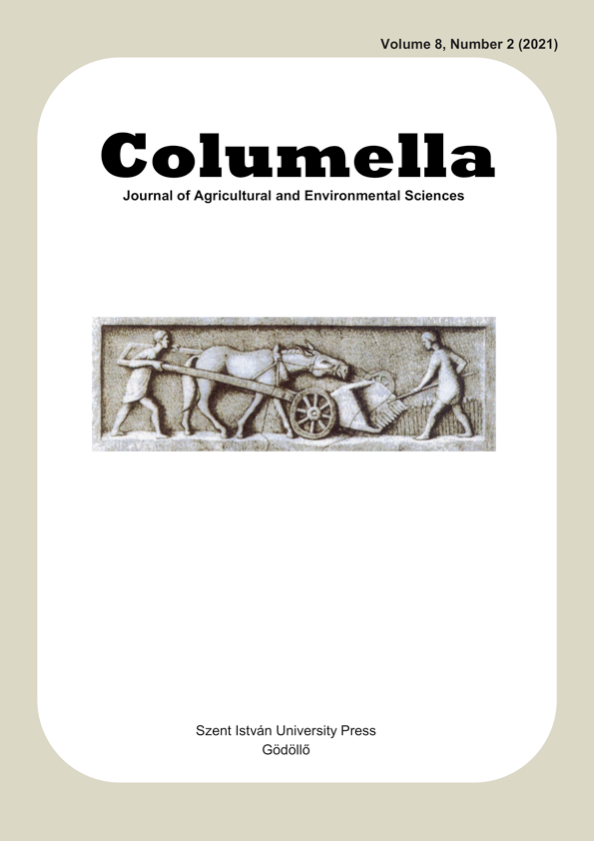Reuse of wastewater from fish farm for irrigation in aerobic rice (Oryza sativa L.) cultivation
DOI:
https://doi.org/10.18380/SZIE.COLUM.2021.8.2.17Keywords:
Rice, quality parameters, grain dimensions, mineral content, aquaculture effluentAbstract
The utilization of wastewater in irrigated agriculture is becoming vital in those regions where access to freshwater is low. Wastewater in rice cultivation as an alternative water source can also play significant role in the future. This experiment was conducted in Szarvas, Hungary to evaluate the performance of a Hungarian rice variety (‘Janka’) irrigated with a saline effluent water from an intensive fish farm. Irrigation was carried out both in the form of direct use (I1) of the wastewater and with two additional treatments: I2 - gypsum supplementation, I3 - wastewater dilution with oxbow lake water and gypsum supplementation. Water from the local oxbow lake was set as irrigation control. During the experiment, the quality parameters, grain size and mineral composition (Na, K, Mg, Ca, and P) of rice seeds were measured. The study showed that the application of wastewater and treated wastewater decreased many of these parameters. I1 significantly reduced the thousand grain weight of paddy and cargo seeds. Meanwhile, I2 and I3 had a significant negative effect on the head rice percentage. Grain length, width and ratio were also decreased significantly compared to the control irrigation. Only the mineral content of the grains remained statistically unchanged. The current study showed that the selected rice variety generally reacted negatively to the wastewater and also to the treated wastewater.
Downloads
Published
Issue
Section
License
Copyright (c) 2021 Marks Ibadzade, Árpád Székely, Tímea Szalóki, Károly Penksza, Mihály Jancsó

This work is licensed under a Creative Commons Attribution-NonCommercial-NoDerivatives 4.0 International License.






